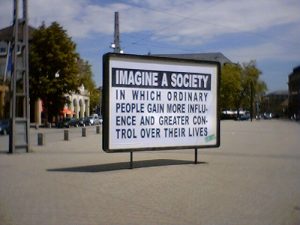

He shows how an originary nationalism born in the Americas was adopted by popular movements in Europe, by imperialist powers, and by the anti-imperialist resistances in Asia and Africa.In a new afterword, Anderson examines the extraordinary influence of Imagined Communities: he also explores the book's international publication and reception, from its first publication towards the end of the Cold War era to the present day. In this greatly anticipated revised edition, Anderson updates and elaborates on the core question: What makes people live and die for nations, as well as hate and kill in their name?Anderson examines the creation and global spread of the 'imagined communities' of nationality, and explores the processes that created these communities: the territorialization of religious faiths, the decline of antique kingship, the interaction between capitalism and print, the development of secular languages-of-state, and changing conceptions of time and space. Imagined Societies: A Critique of Immigrant Integration in Western Europe.

Since then it has sold over a quarter of a million copies and is widely considered the most important book on the subject. Imagined Communities examines the creation & function of the imagined communities of nationality & the way these communities were in part created by the. Imagined Childcare Guides for Eight Societies Get access Cited by 9 2nd edition Alma Gottlieb, University of Illinois, Urbana-Champaign, Judy S. Imagined Communities, Benedict Anderson's brilliant book on nationalism, forged a new field of study when it first appeared in 1983.


 0 kommentar(er)
0 kommentar(er)
